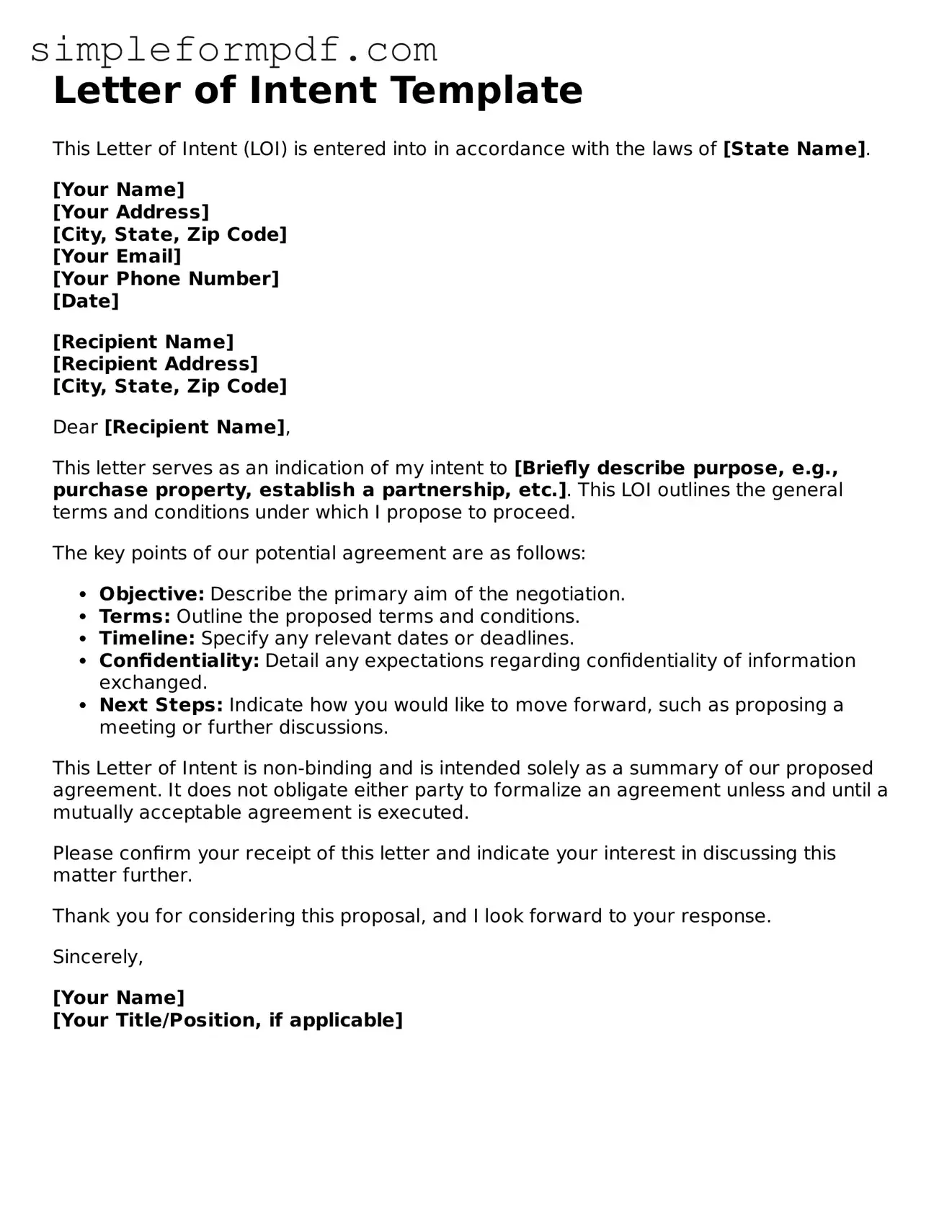Letter of Intent Template
This Letter of Intent (LOI) is entered into in accordance with the laws of [State Name].
[Your Name]
[Your Address]
[City, State, Zip Code]
[Your Email]
[Your Phone Number]
[Date]
[Recipient Name]
[Recipient Address]
[City, State, Zip Code]
Dear [Recipient Name],
This letter serves as an indication of my intent to [Briefly describe purpose, e.g., purchase property, establish a partnership, etc.]. This LOI outlines the general terms and conditions under which I propose to proceed.
The key points of our potential agreement are as follows:
- Objective: Describe the primary aim of the negotiation.
- Terms: Outline the proposed terms and conditions.
- Timeline: Specify any relevant dates or deadlines.
- Confidentiality: Detail any expectations regarding confidentiality of information exchanged.
- Next Steps: Indicate how you would like to move forward, such as proposing a meeting or further discussions.
This Letter of Intent is non-binding and is intended solely as a summary of our proposed agreement. It does not obligate either party to formalize an agreement unless and until a mutually acceptable agreement is executed.
Please confirm your receipt of this letter and indicate your interest in discussing this matter further.
Thank you for considering this proposal, and I look forward to your response.
Sincerely,
[Your Name]
[Your Title/Position, if applicable]
